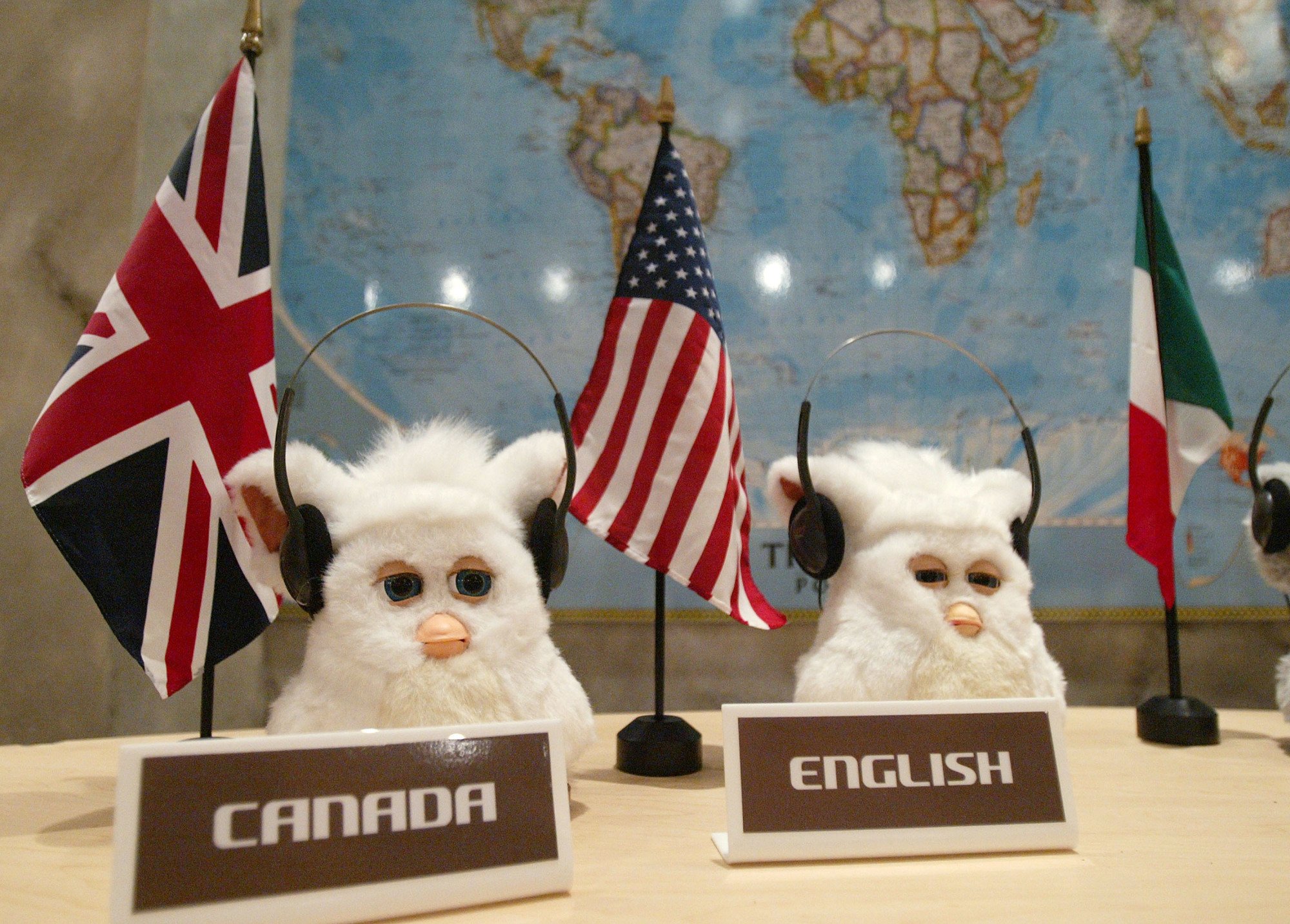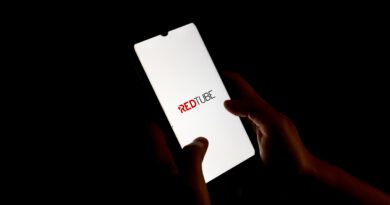11 fake languages that are super easy to learn

Brain studies have shown that learning a language has multiple benefits beyond just improving your communication skills. It can increase problem-solving abilities, critical thinking, and even empathy. So if you don’t know a second language, now is a great time to learn. But do you really want to learn Spanish or Chinese? Plenty of people can already speak those languages. Maybe you’re a geek who wants to go somewhere a little different with your linguistics. There’s an answer: Learn to speak a fictional language!
Not all of these made-up tongues require years of study, though. You can teach yourself these 11 languages with a little effort, and we’ll also point you toward resources to help you learn.
Nadsat
A good place to start with fictional languages is one that uses English as a baseline. Nadsat, from Anthony Burgess’s A Clockwork Orange, is the slanguage spoken by Alex and his dystopian buddies in London. When Stanley Kubrick brought the book to the silver screen, he incorporated tons of it into the shooting script.
Nadsat can seem incomprehensible on first listen, with familiar sentence structure peppered with completely bizarre vocabulary words. These new terms are drawn from Russian terms, often mangled and rhymed to find new meaning, and interspersed with portmanteaus and Romani slang.
A quick perusal of the book’s glossary should get you up to speed.
Furbish

In general: the smaller the vocabulary, the easier a language is to learn. That’s why many fictional linguists find the gibberish spoken by the Furby talking toy a good place to start. Released by Tiger Electronics in 1998, it was one of the hottest sellers of that year’s Christmas season. The hamster-like creature communicated verbally with 42 different words, and it gradually replaces them with English as you play with it.
Furbish is an intentionally limited language, making it easy to learn. It’s grown slightly over multiple generations of the toys, but the essential grammar is still the same. Get started with this complete vocabulary.
Dovahzul
If you played Skyrim, you’re probably familiar with at least one Dovahzul phrase — “Fus Ro Dah,” the Unrelenting Force shout. The game’s main theme is also sung in the language of dragons, and players come across it in multiple locations throughout. Bethesda designed a cuneiform written alphabet for the language as well, making it easy to speak phonetically. With no capitalization or punctuation, it’s a relatively simple language to learn hampered only by limited vocabulary.
Dovazhul sentence structure is identical to English, so it’s a solid choice for a second language. Here’s a great resource put together by Elder Scrolls fans to share the beauty of the language with others.
Na’vi
James Cameron is a filmmaker who is notorious for attention to detail, so it’s unsurprising that for the production of Avatar he’d hire someone to create a consistent language for his blue space people to speak. Paul Frommer, a professor of business with a doctorate in linguistics, was charged with coming up with a tongue that would be learnable by humans, but not too similar to any existing Earth language. He took about six months to structure the syntax and morphology, then came up with vocabulary words as needed by the script.
Only about a thousand words of Na’vi were developed by Cameron’s team, but when video games and other spin-offs were released, the language grew. There is a sizable fan community developing it as well. Na’vi is relatively easy to learn due to the modularity of the words — many terms can be expressed by putting multiple existing words together. Here’s a glossary to get you started.
Elvish
JRR Tolkien was a student of languages before he was a fantasy novelist, and he developed the twin tongues of the Elves well in advance of penning a single word of The Hobbit. High Elvish and Low Elvish are quite different from each other, too, so you should probably choose one to specialize in. Quenya, or High Elvish, is based on the Finnish language, which is already an outlier in Europe, and Sindarin is based on Welsh. However, familiarity with either of those languages isn’t necessary to start learning.
Tolkien actually created dozens of other languages in his work, but most of them are fragmentary at best. Both Elvish languages are well-documented and robust, and hundreds of people have mastered them. Here’s a great place to get started.
Gargish
Let’s go back to the world of video games for another invented language that’s remarkably robust. The Ultima games are notorious for their incredible attention to detail, and the sixth game in the series saw the introduction of a magical language for spellcasting. It shouldn’t surprise anyone that when it came time for Lord British to give a race of gargoyles their own speech, he had an internally consistent language created for them.
One advantage to learning Gargish is that it’s rather flexible in terms of grammar, and sentences can be expressed a number of different ways. If you’re interested, here’s an in-depth primer to the Gargish way of speaking.
Ewokese
The Star Wars universe has a number of constructed languages for its various alien races, but the easiest to pick up is probably Ewokese, first heard in Return Of The Jedi. The tongue spoken by the shrimpy, hairy residents of Endor is relatively simple to learn, with a basic grammar and vocabulary already in place. And can you imagine how impressed your mom will be if you come home for Christmas speaking Ewok? Don’t answer that.
Here’s a complete guide to the Ewok language, as well as translations of every word spoken in the third Star Wars movie. Yub nub!
Lapine
The animated film version of Richard Adams’ classic novel Watership Down traumatized a lot of ’80s kids with its unflinching portrayal of animal violence. The bunnies that adventure through the countryside speak a language called Lapine, which is primarily used for specific nouns, but finds its way into other parts of speech as well. Because Lapine essentially works as an overlay atop regular English, it’s easy to learn and implement into conversation.
Here’s a glossary of extant Lapine terms. Fans of the novel have expanded on Adams’ creation to make it more robust and versatile.
Klingon
Star Trek‘s Klingon language isn’t necessarily easy to learn, but one advantage it has over other tongues on this list is the massive amount of educational resources available. Although Klingons appeared in the original TV show, their language wasn’t introduced until Star Trek: The Motion Picture, when actor James Doohan came up with the general sound of it. By Star Trek III, director Leonard Nimoy realized that they needed an actual language and commissioned it from linguist Marc Okrand.
Since then, the language has only grown in popularity. Several important works of English literature have been translated into Klingon, and there are a number of fluent speakers in the fandom. One couple even raised their son from birth speaking Klingon as his first language. Get started at the Klingon Language Institute, or learn it while commuting to work thanks to its inclusion in Duolingo.
Simlish
If you’ve ever watched your little computer people argue with each other and just had to know what they were saying, good news: Simlish is actually a real language that you can learn. It first debuted in 1996’s SimCopter as chatter over the radio and has become more and more important over the series. Simlish is relatively easy to learn because it’s grammatically much like English, just with a vocabulary sourced from multiple other tongues.
Originally intended to be complete nonsense, the language has grown to be relatively understandable with a little effort, and people even do videos where they translate popular songs into Simlish. Here’s a comprehensive guide to learning the language.
Dothraki
When George RR Martin started work on A Song of Ice and Fire, he didn’t put a lot of thought into the composition of the language spoken by the nomadic Dothraki. When HBO optioned the books for television, they liased with the Language Creation Society to turn Martin’s snippets into a full-fledged language. Grammar is simple, with sentences in subject-verb-object order and a little over 3,000 known words.
Learn Dothraki here; the site also has resources for Valyrian, the other major Game of Thrones tongue, but why would you ever want to learn that?
While it would probably be more useful to learn a language commonly used around the world, we certainly think parties would be more fun if everyone spoke like various types of fictional characters or space aliens.
This story originally appeared on Geek.
UPDATE: Nov. 21, 2023, 2:07 p.m. AEDT This article was originally published in Apr. 2020, and has since been updated in Nov. 2023.


